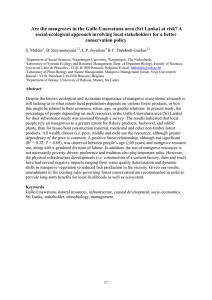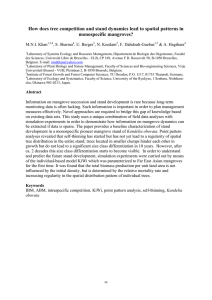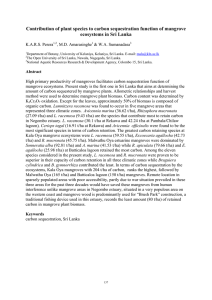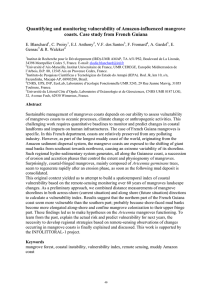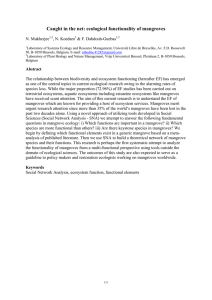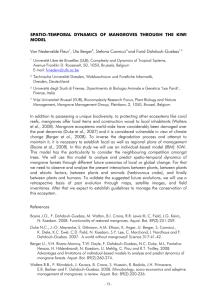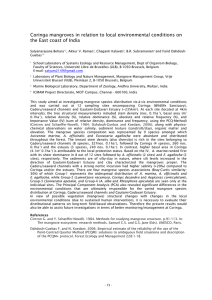Survey on the distribution and species composition of mangroves in... Lanka in relation to the salinity of associated surface water
advertisement
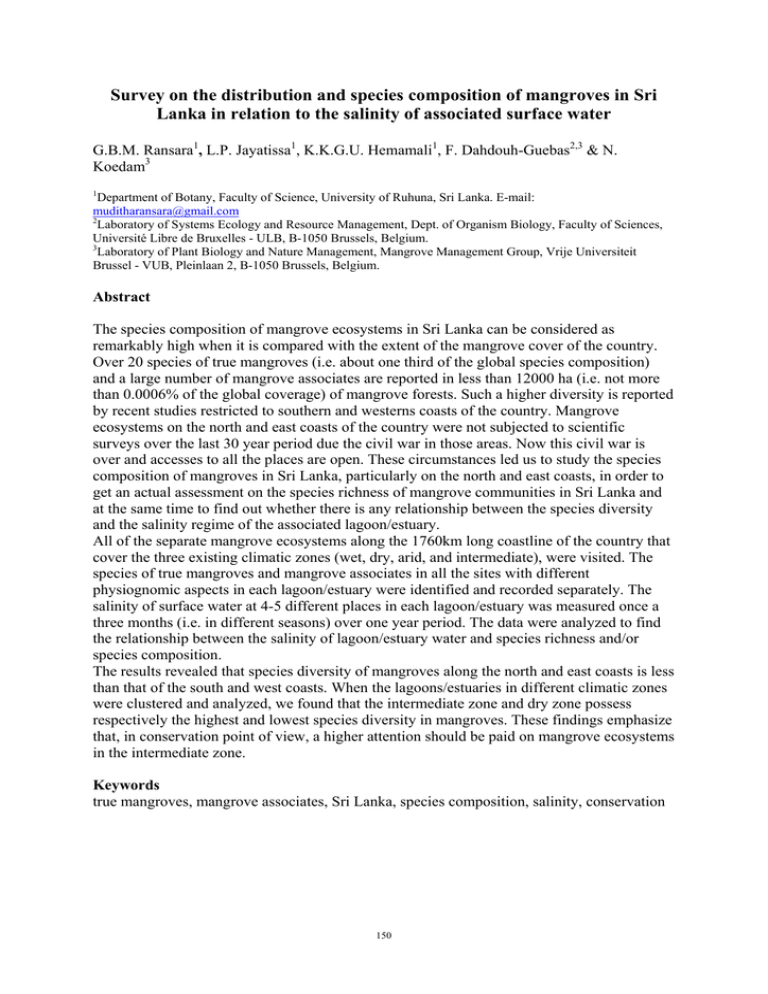
Survey on the distribution and species composition of mangroves in Sri Lanka in relation to the salinity of associated surface water G.B.M. Ransara1, L.P. Jayatissa1, K.K.G.U. Hemamali1, F. Dahdouh-Guebas2,3 & N. Koedam3 1 Department of Botany, Faculty of Science, University of Ruhuna, Sri Lanka. E-mail: muditharansara@gmail.com 2 Laboratory of Systems Ecology and Resource Management, Dept. of Organism Biology, Faculty of Sciences, Université Libre de Bruxelles - ULB, B-1050 Brussels, Belgium. 3 Laboratory of Plant Biology and Nature Management, Mangrove Management Group, Vrije Universiteit Brussel - VUB, Pleinlaan 2, B-1050 Brussels, Belgium. Abstract The species composition of mangrove ecosystems in Sri Lanka can be considered as remarkably high when it is compared with the extent of the mangrove cover of the country. Over 20 species of true mangroves (i.e. about one third of the global species composition) and a large number of mangrove associates are reported in less than 12000 ha (i.e. not more than 0.0006% of the global coverage) of mangrove forests. Such a higher diversity is reported by recent studies restricted to southern and westerns coasts of the country. Mangrove ecosystems on the north and east coasts of the country were not subjected to scientific surveys over the last 30 year period due the civil war in those areas. Now this civil war is over and accesses to all the places are open. These circumstances led us to study the species composition of mangroves in Sri Lanka, particularly on the north and east coasts, in order to get an actual assessment on the species richness of mangrove communities in Sri Lanka and at the same time to find out whether there is any relationship between the species diversity and the salinity regime of the associated lagoon/estuary. All of the separate mangrove ecosystems along the 1760km long coastline of the country that cover the three existing climatic zones (wet, dry, arid, and intermediate), were visited. The species of true mangroves and mangrove associates in all the sites with different physiognomic aspects in each lagoon/estuary were identified and recorded separately. The salinity of surface water at 4-5 different places in each lagoon/estuary was measured once a three months (i.e. in different seasons) over one year period. The data were analyzed to find the relationship between the salinity of lagoon/estuary water and species richness and/or species composition. The results revealed that species diversity of mangroves along the north and east coasts is less than that of the south and west coasts. When the lagoons/estuaries in different climatic zones were clustered and analyzed, we found that the intermediate zone and dry zone possess respectively the highest and lowest species diversity in mangroves. These findings emphasize that, in conservation point of view, a higher attention should be paid on mangrove ecosystems in the intermediate zone. Keywords true mangroves, mangrove associates, Sri Lanka, species composition, salinity, conservation 150
